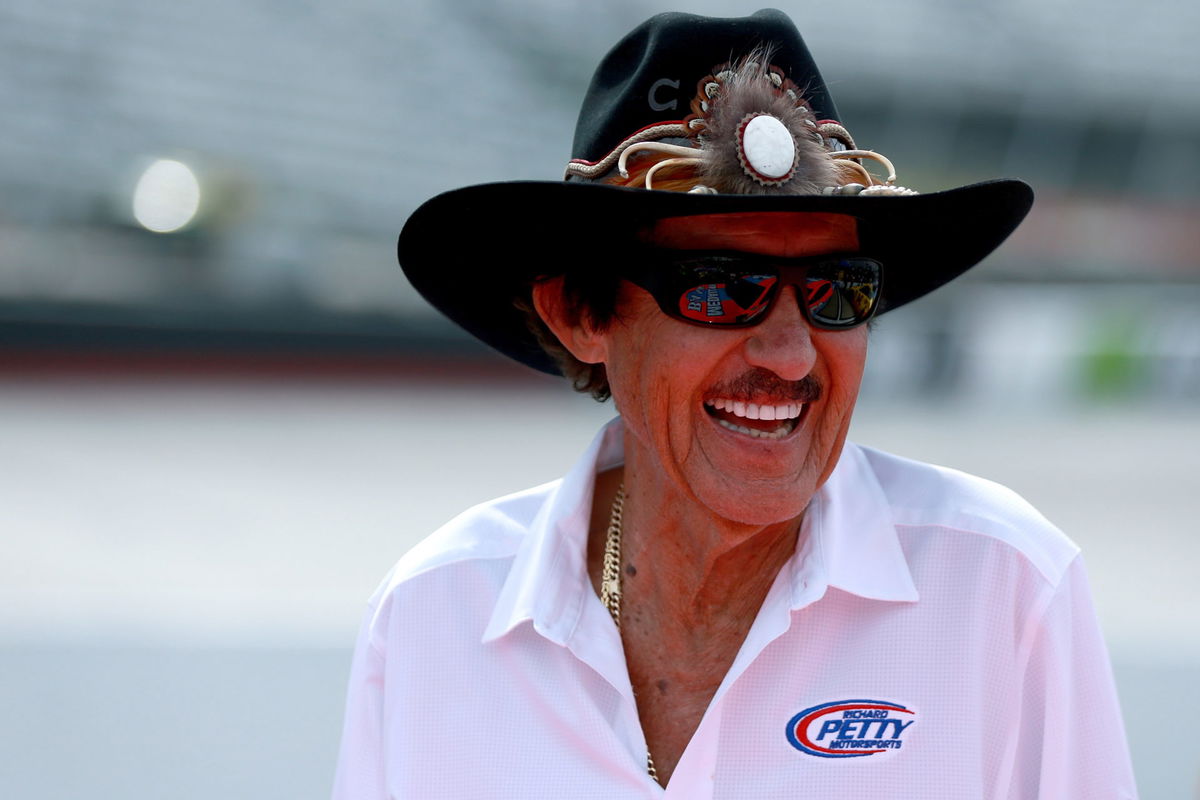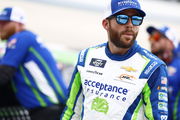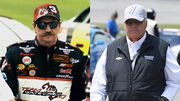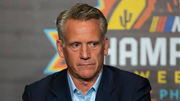
Getty
BRISTOL, TN – AUGUST 17: Team owner, Richard Petty, stands on pit road during practice for the Monster Energy NASCAR Cup Series Bass Pro Shops NRA Night Race at Bristol Motor Speedway on August 17, 2018 in Bristol, Tennessee. (Photo by Sean Gardner/Getty Images)

Getty
BRISTOL, TN – AUGUST 17: Team owner, Richard Petty, stands on pit road during practice for the Monster Energy NASCAR Cup Series Bass Pro Shops NRA Night Race at Bristol Motor Speedway on August 17, 2018 in Bristol, Tennessee. (Photo by Sean Gardner/Getty Images)
On February 22, 1959, Richard Petty drove in the inaugural race held at the Daytona International Speedway. In the next three decades, the King drove to its victory lane 10 times, including a record seven wins at the prestigious Daytona 500. But even Petty marveled at the impressive track the first time he saw it.
Watch What’s Trending Now!
In the latest episode of ‘Shift: NASCAR’s Evolution through the Eyes of The King’, the legendary Hall of Famer recalled his first racing experience at the newly constructed 2.5-mile race track by founder Bill France.
ADVERTISEMENT
Richard Petty was left awestruck the first time he saw the Daytona International Speedway
When Richard Petty reached the historic track in 1959, little did he know it would become the ground of his 200th race win 25 years later. But at that moment, a 21-year-old Petty could barely comprehend its majestic grandeur. In the episode shared by NASCAR, he explained, “All of our racetracks, 90% of them was dirt and it was all short tracks so all of a sudden you go to a big track like Daytona and man, I mean it’s so massive.” He remembered visiting for the first time with his father, Lee Petty, and racing luminaries Fireball Roberts and Curtis Turner. “Nobody had any experience on the racetrack,” Petty said.
He elaborated, “None of us had ever seen the thing. We had no idea what it was, and we went through the tunnel in the third and fourth turn. It was just so massive but looked like a wall and we got in and it was just flat. I said, man this is something else.”
On his very first lap, Petty got up on the high bank of the track and was instantly handed a black flag. Till then, Richard Petty was used to driving at the speed of 130 mph, but on the track, he found his wings. “I go through three and four, come off of four, come back by me, I just made my move too quick. We were geared to run 130 mph. All of a sudden I’m running 145.”
ADVERTISEMENT
The King knew how he felt about the track. “It’s like going to the Moon, another world.” He was just starting out so did not face the difficulty others did of transitioning from dirt racing and traditional dirt tracks. “I didn’t know nothing about drafting or nothing else, but I knew something was happening. When I went there, I just started driving, so I didn’t have a lot of experience so I didn’t have to unlearn anything. My dad went there, Fireball Roberts, Curtis Turner, all these guys going, they had to unlearn on the short track, you had to wait for somebody’s slip to get by because it was completely different kind of racing.”
ADVERTISEMENT
The shift was deliberate on the part of NASCAR and its chairman Bill France Sr.
ADVERTISEMENT
Watch This Story: Richard Petty’s Long-Term Ally Takes His Final Drive to Heaven
Top Stories
Ross Chastain Labels NASCAR Driver “The Most Punchable Face” to Excuse Himself Over Punchgate Controversy

Jimmie Johnson Poaches Richard Childress’ Key Ally Ahead of NASCAR 2026 Season

When Rick Hendrick Walked Away From $1,000 to Avoid Dale Earnhardt Sr’s Wrath

NASCAR’s Next Big Villain Named as Denny Hamlin Enters Fans’ Good Books

Commissioner Steve Phelps Quits NASCAR Days After Getting Exposed in Lawsuit Trial

The 1959 Daytona race commenced a new era for NASCAR
Over 40,000 thrilled spectators witnessed Lee Petty win the race over Johnny Beauchamp in a photo finish that took three days to determine. It ushered in a new dawn of racing that catapulted Richard Petty to glorious heights. Fans were hooked, sponsorship deals were made, and it was no longer a strictly Southern sport, which was precisely what France desired.
ADVERTISEMENT
Petty revealed, “At that time NASCAR was trying to get away from their roots, from their bootlegging deals, dirt track. They were trying to go to the next level and Daytona started ascend to the next level…That started a new era. That started a speedway era. They started building superspeedways because the crowds were starting to gain up. Instead of having 15 or 20,000 people, having 80 or 100,000 people.”
60 Years Ago Today: The First Daytona 500. Johnny Beauchamp declared winner after a photo finish. But NASCAR has no photos of the actual finish so they ask people if they have pictures! Three days later, Lee Petty is the champ. pic.twitter.com/IDspLLiT0W
— Darren Rovell (@darrenrovell) February 22, 2019
The crown jewel of NASCAR has always held a prime position in the hearts of the racing community. But reliving its beginning through the eyes of the legend who was part of its inaugural run serves to reinforce its significance in NASCAR’s rich heritage.
ADVERTISEMENT
ADVERTISEMENT
ADVERTISEMENT
ADVERTISEMENT

